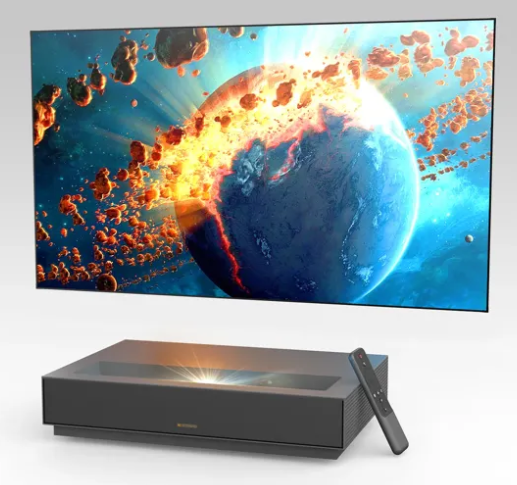Decoding the Transformation of 4K Laser Projectors: Theater Giants to Living Room Essentials
In the vast landscape of digital entertainment, one name often stands out when discussing the highest-quality home theater systems: the WEMAX Nova. However, before it became a living room essential, the technology behind it – the 4K Laser Projector – had its roots deeply embedded in the film industry. It’s essential to decode the transformation that has brought these devices from exclusive theater giants to our living room essentials.
Movie theaters were the primary testing grounds for early projector technologies as early as the 1970s. However, these devices were generally film-based, cumbersome, and prone to quality degradation over time. Things didn’t alter drastically until the advent of digital projectors in the late 1990s. Dr. Larry Hornbeck of Texas Instruments pioneered Digital Light Processing (DLP) technology, which transformed the field by providing a high-quality, robust, and dependable projection system. The movie industry’s embrace of digital projectors resulted in higher-resolution images, improved color integrity, and a significant reduction in projector size and weight.
The arrival of the twenty-first century heralded the next important advancement in projector technology: laser projectors. These projectors, which use a laser light source rather than a regular lamp, provide more brightness, superior color accuracy, and a nearly infinite lifespan. Sony introduced the world’s first 4K laser projector in 2012, primarily aimed at the film industry. This advancement paved the way for the theater-to-living-room crossover.
As 4K laser projectors began to prove their worth in movie theaters, the consumer electronics market quickly recognized the opportunity. Companies began to invest in miniaturizing these systems to deliver the same immersive experience to households all over the world. This was a difficult task to achieve. Initially, the sophisticated components and cooling systems required for a 4K laser projector were too huge and expensive for residential use. Nonetheless, continued innovation resulted in the first 4K laser projectors for home theaters.
While the change was gradual, it wasn’t until the mid-2010s that 4K laser projectors made a significant impact on the consumer electronics market. WEMAX Nova was the most notable of these. Its small size, paired with its high-quality projection and low pricing, made it a popular choice among customers. The device not only brought cinema-quality projection into the living room, but it also symbolized how far technology had progressed.
4K laser projectors, such as the WEMAX Nova, are no longer only a luxury item for moviegoers. They are now regarded as an important component of any high-quality home theater setup, providing an immersive viewing experience once reserved for theaters. Furthermore, these projectors have evolved not just in terms of technology but also in terms of user experience. They cater to the modern digital lifestyle of users with features such as voice control, smart connectivity, and customizability.
We’ve talked about 4K laser projectors’ history and technological advances, but we also need to acknowledge the social and market forces that impacted this shift. Consumer attitudes around home entertainment are evolving. Netflix, Disney+, and Amazon Prime Video have changed media consumption. High-quality content is increasingly preferred at home. 4K laser projectors are becoming more popular as people want to recreate the movie experience at home.
Another critical issue is manufacturers’ continual technological competitiveness. Brands such as WEMAX, Sony, and Epson are constantly competing to outdo one another by offering more features, higher quality, and a better user experience. This rivalry encourages innovation, resulting in upgraded projectors that are more efficient, user-friendly, and cost-effective. The rate at which this technology is progressing means that in the not-too-far future, we may see capabilities that seem like a distant dream today, such as holographic projection or integration with artificial intelligence.
To summarize, the evolution of 4K laser projectors from theatrical giants to living room basics is a fascinating story of technological improvement, driven by commercial needs as well as developing consumer behaviors. It is vital to realize, however, that this metamorphosis is not an end. As technology advances, so will our home entertainment systems. Who knows what the future will bring? Whatever breakthroughs come next, one thing is certain: they will surely try to further enhance our movie-watching experiences, bringing us even closer to the cinematic experience right in the comfort of our living rooms.

